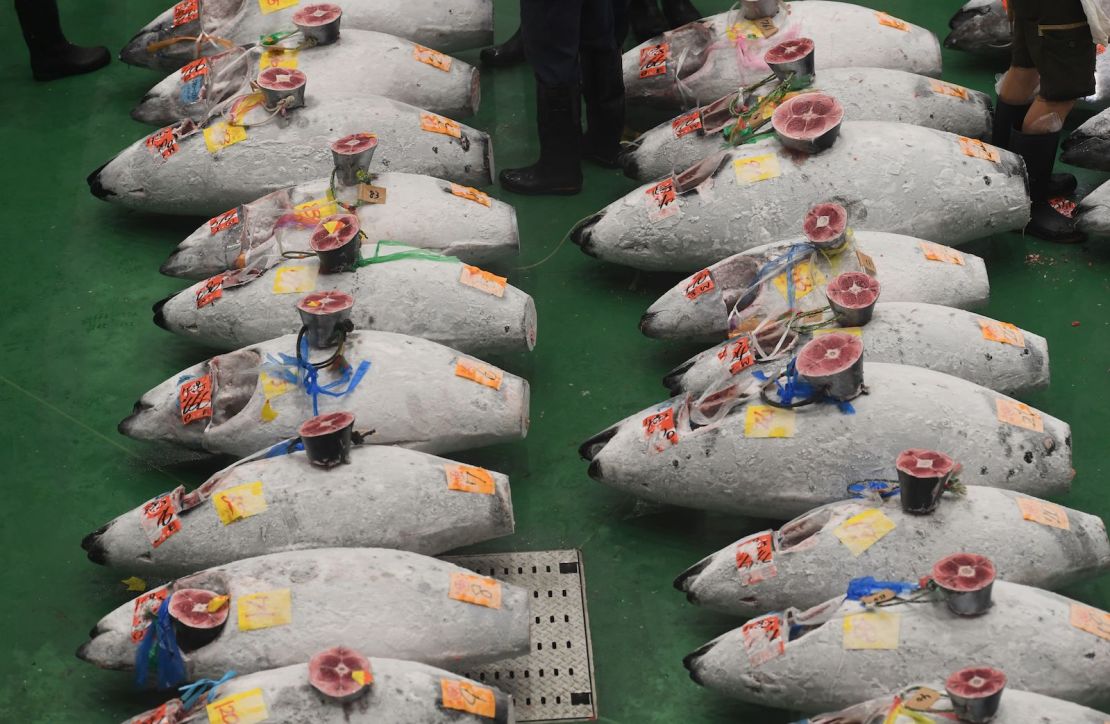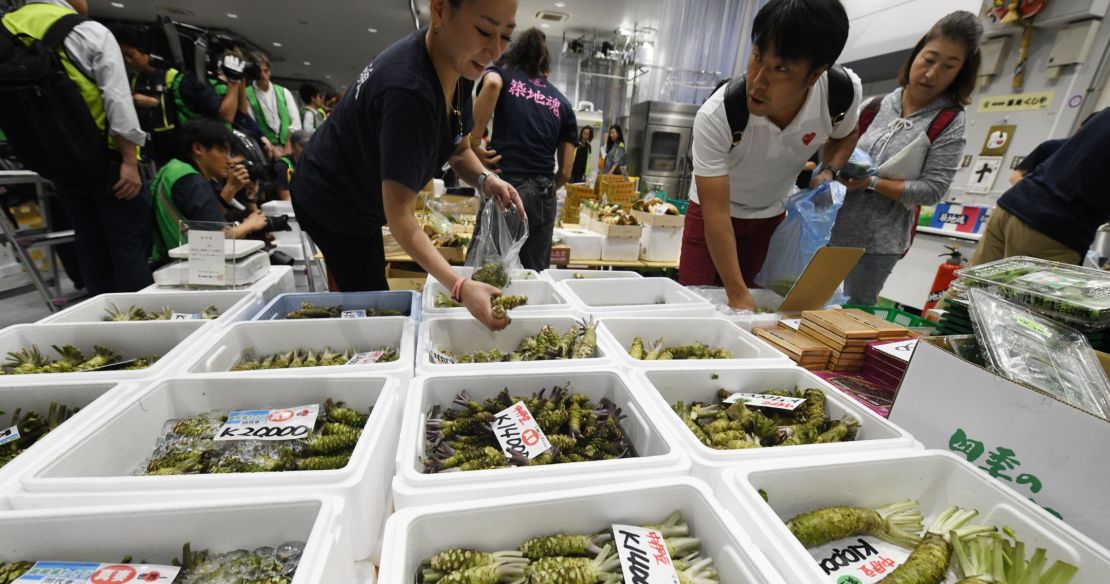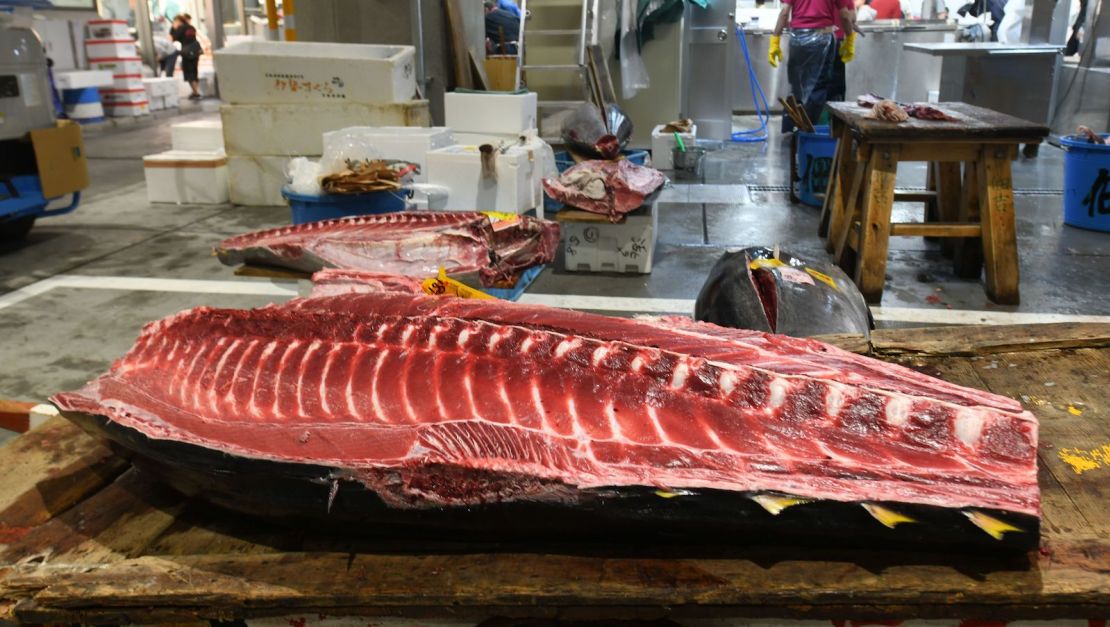After two years of delays and uncertainty, the Toyosu fish market in Tokyo finally opened its doors on October 11 at the stroke of midnight.
Toyosu replaces Tokyo’s famous Tsukiji market, a popular tourist destination that closed on October 6 following 83 years of operations.
The new Toyosu market covers 407,000 square meters – making it 1.8 times larger than Tsukiji, which contained the world’s largest fish and seafood market.
The relocation from Tsukiji took just four days, a remarkable feat considering the old market was home to more than 600 seafood and vegetable traders.
With the move, Toyosu inherits one of the most lucrative fish trading operations in the world, worth an estimated $3.8 billion a year.
Catering to the kitchens of Japan’s capital and beyond, the market trades more than 2,800 tons of fish and vegetables per day, worth about 2 billion yen ($17.8 million).
The most expensive fish to hit the block on opening day was a 214-kilogram bluefin tuna from Aomori prefecture, auctioned off for 4.28 million yen ($38,000).
“Today’s a fresh start for us,” said Hiromi Amino, CEO of a major Toyosu market wholesaler.
“We will unite to develop this market and earn the clients’ trust. At the end of the day, we would like to build the brand of Toyosu to go beyond Tsukiji for the next century.”
Two years of controversy

The move to the new Toyosu market was controversial.
It was originally supposed to open up in 2016, but was delayed for various reasons, including worries over contaminated soil.
The spot where the market was being constructed used to house a gas production plant, and it appeared the ground beneath had absorbed chemicals from this factory.
Following a campaign to clean it up, experts declared the area safe for use this past summer.
But still many opposed the move, leading to protests and a legal suit aimed at blocking the relocation.
A new brand for Tokyo

Now that the move has happened, the Tokyo government hopes Toyosu will too become a destination for visitors looking to learn about Japan’s culinary affluence.
“Today we will begin to create a new brand – Toyosu,” said Tokyo Governor Yuriko Koike during a speech to reporters and traders at the new market.
“The power and thrust of the Tsukiji brand was built in 83 years. Let’s start with a clean slate to create it step by step. I am certain that your work and contributions will grow Toyosu market as Tokyo’s central market.
“The market environment has changed from the old open site to a new closed and controlled environment. We would like to promote this market as the global standard.”
Visiting Toyosu

For Tokyo visitors hoping to experience the new Toyosu market, the closest subway station is Shijo-mae Station, located on the Yurikamome Line (the station actually connects directly to the market, so don’t worry about getting lost).
It’s only two stops from Toyosu Station, which also can be accessed via the Yurakucho Line. The market is the only real draw near this station, though Toyosu has a variety of restaurants and shopping centers worth exploring, while the Yurikamonme Line leads to Odaiba, a man-made island in Tokyo Bay.
For those aiming to get to the Toyosu market before sunrise, find a hotel in Toyosu or Odaiba.
Entry into the Toyosu market is free for all visitors, with those hoping to see the space at its liveliest advised to get there before 8 a.m.
The famous early morning tuna auctions begin at 4:30 a.m. daily.
But unlike at Tsukiji market, Toyosu’s auction is held separate from the general public.
Fresh and frozen tuna are auctioned on the ground level, while tourists and spectators are only allowed to watch from a viewing platform on the second floor.
Whereas at Tsukiji you had to get a reservation ticket, all you have to do now is show up and try to get a good spot.
All dining options are located in the structure as well now, with around 40 food stalls – most carried over from Tsukiji – set to operate.
Beyond that, visitors can also head up to the grass-carpeted roof to take in nice views of the city. Organizers also plan to move the famous Tsukiji shrine to the venue as well.
Tokyo-based freelance writer Patrick St. Michel contributed to this report.




















